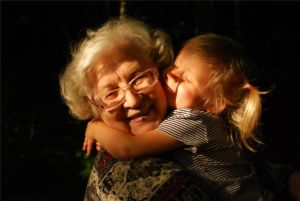Difference between revisions of "Difference between Nuclear Family and Joint Family"
(Created page with "thumb|right|Nuclear family thumb|left|Joint family. Family is the basic...") |
|||
| Line 29: | Line 29: | ||
|} | |} | ||
=== Venn Diagram === | === Venn Diagram === | ||
| − | [[File:Difference-Between-Joint- | + | [[File:Difference-Between-Joint-nulear bommb family for ggod] |
Revision as of 04:56, 26 November 2020
Family is the basic unit of a society. Many people have different principles about family, including its members of the household. Here, we will discuss the difference between a joint family and nuclear family.
A joint family, also known as an extended family, is defined by a family that includes not only parents and children but also the grandparents, aunts, uncles, cousins, and other relatives that live nearby or exist within the same household. Joint families are larger than nuclear families.
On the other hand, a nuclear family consists of the parents and children only. Grandparents and other relatives do no live in the same home. A nuclear family is also referred to as an elementary, traditional, or conjugal family.
The difference between a joint family and nuclear family is not limited in the number of its members. Income, expenses, freedom, space, and how members treat each other significantly differ between the two models. There is no set standard whether a joint or nuclear family is better - each type has its own share of advantages and disadvantages.
| Joint family | Nuclear family | |
|---|---|---|
| Definition | A family consisting of parents, grandparents, aunts, uncles, offspring and other relatives | A family made up of a mother, father, and children |
| Synonymous terms | Extended family | Conjugal family, traditional family, elementary family |
| Flow of Income | Joint families collectively earn more because there are more wage earners present | Typically earns less than joint families because of lesser wage earners |
| Members | Parents, grandparents, aunts, uncles, children, cousins, etc. | Parents and children |
| Emotion | Tends to be distributed among the different members. Closer relationship with other family members. | More straightforward relationships since they are focused simply between the spouse, parents and child, or siblings |
| Freedom | Lesser freedom due to more social obligations | More freedom |
| Advantages | Larger collective income, more support from family members, more connections, children have more support from the many adults in the household | More privacy, less financial demands, less quarrels, more freedom |
| Disadvantages | Less privacy and space, higher tendency of jealousy and quarrels, potentially distracting study or work environment, more expenses | Less likely to socialize with other family members, less support within the household, tendency to be collectively-like minded due to limited number of personalities at home |
Venn Diagram
[[File:Difference-Between-Joint-nulear bommb family for ggod]

